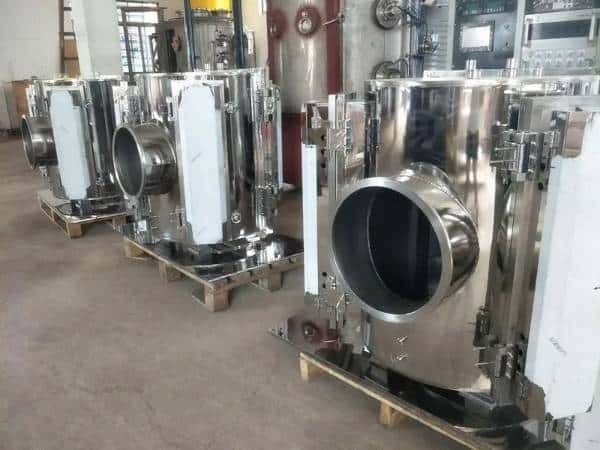What are the uses and characteristics of vacuum chambers?
Vacuum chamber usage
1. Material preparation and treatment
Vacuum chambers have a wide range of applications in material preparation and treatment, including deposition, evaporation, heat treatment, cleaning, surface modification, etc. These treatments need to be carried out under vacuum or low pressure conditions. For example, evaporative coating is a common material preparation technology that has great applications in industries such as optics, electronics, and healthcare, such as manufacturing LEDs, solar cells, magnetic storage media, etc.
2. Laboratory research
Vacuum chambers are also used for various laboratory research, such as physics, chemistry, astronomy, etc. In these studies, vacuum chambers were used to simulate various high-pressure, high-temperature, and high-energy environments. For example, using vacuum chambers for high-pressure reactions or studying cosmic rays.
3. Medical devices
Vacuum chambers are used in some medical devices, such as dialysis machines, artificial heart and lung machines, etc. These instruments need to be operated in a strict sterile environment to avoid contamination by bacteria and viruses.
4. Industrial automation
Vacuum chambers are also widely used in industrial fields, such as semiconductor industry, vacuum packaging, etc. In the semiconductor industry, vacuum chambers are used to clean the surface of silicon wafers and protect electronic components from impurities, dust, and moisture during the manufacturing process. In vacuum packaging, vacuum chambers are used to package food, cosmetics, drugs, etc. in order to extend the shelf life of products.
Vacuum chamber characteristics
1. Low pressure or vacuum
The characteristic of vacuum chambers is that they can create low-pressure or vacuum environments. This environment can greatly reduce the impact of air pressure on machinery, electronic equipment, and even organisms, reducing oxidation, corrosion, and pollution. There are fewer air molecules in the vacuum chamber, so its heat and mass transfer ability is reduced, which can reduce the impact of heat and mass transfer.
2. Transparent window
A vacuum chamber typically contains at least one transparent window. This window not only allows people to observe the experiments and processes inside the cavity, but also can be used for absorption and emission research through different wavelengths of light. According to the research to be conducted, windows can use different materials, such as quartz, glass, polymers, etc.
3. Energy saving
The vacuum chamber is always in an anaerobic state, so it requires less energy and is relatively energy-efficient. For certain long-term operating equipment, the energy-saving benefits are very significant, such as modern lighting, television, communication, etc.
4. Customizable
The vacuum chamber can be made according to user requirements. For example, size, configuration, control parameters, window material, etc. In high-end research and application scenarios, it is necessary to ensure the performance and accuracy of the equipment, so customized vacuum chambers are often necessary.
In short, vacuum chambers are high-end equipment widely used in science and industry. Its characteristic is the ability to create and maintain low pressure or vacuum environments, transparent windows allow people to observe the experimental process, low equipment energy consumption, and can be customized according to user needs.
(The article comes from the Internet. If reprinting is not allowed, please contact our company to delete it.)

